Numpy是Python的一个科学计算库,提供了矩阵运算的功能。安装方法可以直接使用pip install numpy命令,也可以在http://sourceforge.net/projects/numpy/files/NumPy/上下载与python相应版本的exe文件。
这里就记录下在学习和使用Numpy中所用过的一些函数方法,随时进行补充。
numpy的官方文档:http://docs.scipy.org/doc/numpy/reference/
1.导入Numpy
导入方法如下:
2.多维数组
使用numpy.arange
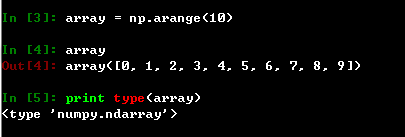
这是生成一维数组,如果是要生成多维数组,则再使用reshape函数,如下图:
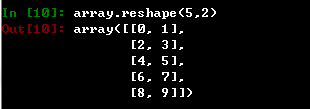
这里就生成了一个5*2的数组
使用numpy.array
可以使用list列表或者tuple元组作为参数生成一维或多维数组
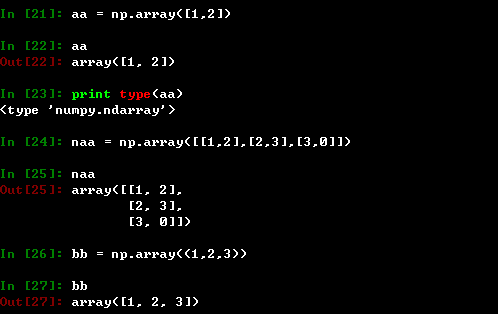
另外,还可以指定数据类型,如numpy.int32,numpy.int16,numpy.float64等等。
使用numpy.zeros,numpy.ones,numpy.eye函数可以生成特定的矩阵
使用mat函数可以将数组转化为矩阵
数组的属性
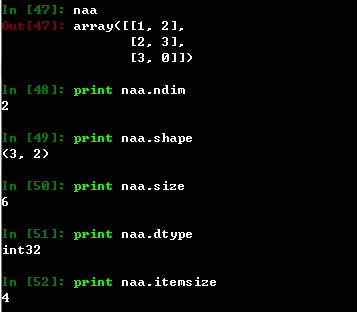
如上图所示,
ndim:表示数组的维度
shape:表示数组的行数和列数
size:表示数组的元素个数
dtype:表示数组的数据类型
itemsize:表示每个元素所占的字节数
tile函数可以用于扩充数组元素
tile(A,repl)可以用于扩充数组的元素,A表示需要扩充的矩阵或数组,而repl参数如果是一个数,表示对A中元素的重复次数,如果repl = (x,y),则y表示对A中元素重复的次数,而x是对进行y次重复得到的数组所要扩充的次数,下图是官方的例子
3.numpy的argsort函数用法
通过help函数获取argsort函数的介绍,从介绍可以得知其返回的是数组值从小到大排序的索引值
这里也参考[numpy中argsort函数用法]这篇文章的介绍。
(http://www.aichengxu.com/view/15541)
以下分别是一维数组和二维数组的使用例子:
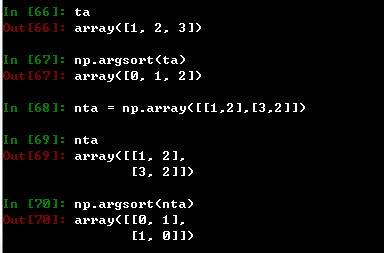
另外,对于二维数组还可以设置axis参数,当axis= 0 表示按列排序,而axis=1表示按行排序。
另外说到排序,还有两个常用的函数sort和sorted,详细内容请看:http://maoersong.blog.163.com/blog/static/171557351201424105925681/?newFollowBlog
4.对多维数组的索引
对多维数组的索引有以下几种方法:
(1)切割索引
import numpy as np# Slicing indexing
# Create the following rank 2 array with shape (3,4)
# [[1 2 3 4]
# [5 6 7 8]
# [9 10 11 12]]
a = np.array([[1,2,3,4],[5,6,7,8],[9,10,11,12]])# Use slicing to pull out the subarray consisting of the first 2 rows
# and columns 1 and 2; b is the following array of shape (2,2):
# [[2 3]
# [6 7]]
b = a[:2, 1:3]# A slice of an array is a view into the same data, so modifying it
# will modify the original array
print a[0,1] # Prints "2"
b[0, 0] = 55 # b[0, 0] is the same piece of data as a[0, 1]
print a[0, 1] # Prints "55"
(2)整数索引
# Integer array indexing
# The returned array will have shape(3,)
print a[[0, 1 , 2], [2, 3, 2]] # Prints "[ 3 8 11]"# The above example of integer array indexing is equivalent to this:
print np.array([a[0, 2], a[1, 3], a[2, 2]]) # Prints "[ 3 8 11]"# When using integer array indexing, you can reuse the same
# element from the source array:
print a[[0, 0], [1, 1]] # Prints "[2 2]"# Equivalent to the previous integer array indexing example
print np.array([a[0, 1], a[0,1]]) # Prints "[2 2]"(3)布尔值索引
# Boolean array indexing
bool_idx = (a > 3) # Find the elements of a that are bigger than 3;# this returns a numpy array of Boolean of the same# shape as a, where each slot of bool_idx tells# whether that element of a is > 2
print bool_idx # Prints "[[False False False True]"# [ True True True True]# [ True True True True]]# We use boolean array indexing to construct a rank 1 array
# consisiting of the elements of a corresponding to the True values
# of bool_idx
print a[bool_idx] # Prints "[ 4 5 6 7 8 9 10 11 12]"# We can do all of the above in a single concise statement:
print a[a > 3] # Prints "[ 4 5 6 7 8 9 10 11 12]"


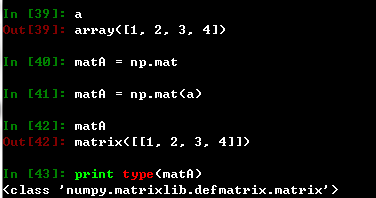
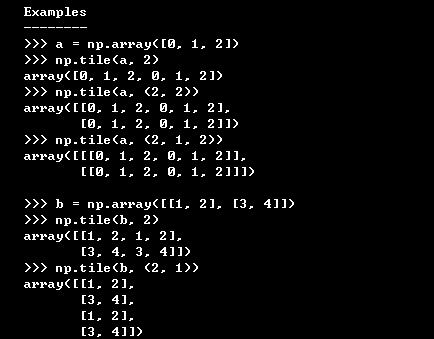

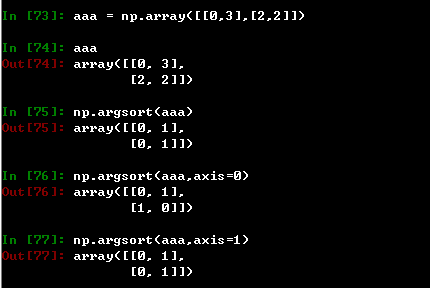


:vue+element今日头条管理--优化封装请求)


:vue+element今日头条管理--反馈)
)

:vue+element今日头条管理--自定义格式化面板)
)
![teststand调用python模块_TestStand 基本知识[10]--在序列中调用代码模块之--LabVIEW](http://pic.xiahunao.cn/teststand调用python模块_TestStand 基本知识[10]--在序列中调用代码模块之--LabVIEW)
:vue+element今日头条管理--创建路由和配置路由)
)






)